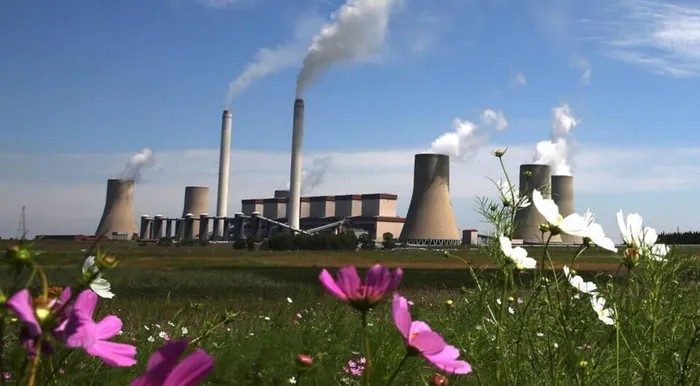Eskom's plan to shutdown coal plants threatens South Africa's electricity affordability

Eskom's energy transition: The risks of retiring coal-fired power plants
Image: Supplied
Eskom, the country’s state-owned power utility, faces the difficult task of retiring nearly half of its coal-fired capacity, 22,000 megawatts (MW) out of 45,000 MW installed - casting uncertainty over reliable, affordable electricity for millions.
Former Eskom CEO and Generation Head Matshela Koko warned that the plan to shutter coal plants risks doubling electricity tariffs. He calls this “reckless folly” driven not by fleet aging but by a "misguided agenda."
In 2021, Eskom formally aligned with the Just Energy Transition (JET) framework, pledging to retire nine coal-fired stations by 2035, halt investments in new coal infrastructure, and reject planned comebacks for mothballed plants.
This ambition reflected the 2019 Integrated Resource Plan’s (IRP) projection to decommission about 11,000 MW of coal capacity by 2030.
A July 2025 Enerdata report reaffirmed Eskom’s intent to pivot toward clean energy sources by 2040, aiming to reduce the country’s reliance on coal. But this vision confronts harsh realities on the ground.
Koko stated that disinvestment in coal plant maintenance between 2018 and 2023 triggered a “catastrophic grid collapse,” spurring unprecedented loadshedding that scorched the economy and public confidence.
“The energy availability factor plummeted," Koko explained in an exclusive IOL interview.
“This shortsighted neglect ignited debilitating power outages that scarred our nation. South Africa cannot afford to shutter 22,000 MW of coal by 2035 without alternative, reliable sources.”
Koko estimates South Africa would need to build approximately 100,000 MW of renewable energy capacity to match coal’s output, assuming a realistic 22% load factor for wind and solar. Yet he argued the sun sets and the wind stalls, leaving critical gaps.
According to Koko, Battery energy storage systems (BESS) could help buffer this intermittency, but current projects like Komati’s repurposed facility - with only 150 MW of storage - fall pitifully short of what the grid demands.
He said that scaling BESS to match needs risks catastrophic cost increases.
“Electricity tariffs could double,” Koko warns, “placing an unbearable burden on a nation where affordability already hangs by a thread.”
Despite these daunting challenges, Eskom’s strategic deployment of 11 synchronous condensers-seven new and four refurbished from Camden and Grootvlei-provides a vital bastion for grid stability as coal plants dwindle.
While aligned with the IRP, Koko says these condensers are a “bulwark, not a cure.”
Koko’s concerns echo global energy realities. Earlier this month, the US Department of Energy recalibrated its stance, conceding that “wind and solar energy cannot power America.”
The Department highlighted America’s “vast untapped” coal resources, underscoring the indispensable role of dependable energy sources that stand ready when renewables falter.
South Africa’s energy challenges mirror these global lessons. Koko advocates for a pragmatic hybrid energy mix that includes coal, natural gas, and nuclear power-“though vilified, these form an indomitable fortress.”
He stresses that leveraging existing infrastructure maintains affordability and system stability, providing a lifeline amid transition chaos.
The Komati battery project, supported by international aid, “glimmers with promise,” but South Africa’s energy strategy risks unraveling without consistent and sizable funding.
Koko calls for “innovative financing-from green bonds to global alliances” to support an energy revolution free from ideology.
“The year 2035 looms with unrelenting force. Failure is not an option,” he warns.
IOL's efforts to solicit Eskom’s comment met silence, as the utility failed to respond despite repeated requests.
At the Continental Energy and Infrastructure Investment Forum in Sun City on Wednesday, Coaltech South Africa CEO Avhurengwi Nengovhela robustly endorsed coal’s role.
“As Africans, we’re blessed with coal resources and expertise. We’ve mined coal for 140 years. Why borrow billions from the West to finance risky transitions when we can harness what’s under our feet? Why jeopardise over a million jobs on uncertain green promises?”
Dr Kevin Kemm, Chairperson of Stratek Global Advanced Solutions, urged African nations to pursue homegrown energy solutions
“In South Africa, in the past, when we built the big coal-fired power station, that was never a six-month project. You’ve got to have the six-year vision, and that starts now. So, you have to say what we’ve got as options: you’ve got coal, you’ve got oil, you’ve got gas, for example. Most African countries don’t have coal, oil, or gas.”
Koko and industry leaders called for a measured, diversified approach that safeguards grid reliability and affordability as the country navigates its energy transition.
thabo.makwakwa@inl.co.za]
IOL Politics
Related Topics: